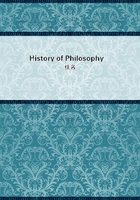
第175章
The Absolute itself, in so far as the positing of difference is taken into account, is defined by Schelling as the quantitative indifference of subjective and objective: in respect to absolute identity no quantitative difference is thinkable. “Quantitative difference is only possible outside of absolute identity, and outside of absolute totality. There is nothing in itself outside of totality, excepting by virtue of an arbitrary separation of the individual from the whole. Absolute identity exists only under the form of the quantitative indifference of subjective and objective.” Quantitative difference, which appears outside of absolute identity and totality, is therefore, according to Schelling, in itself absolute identity, and consequently thinkable only under the form of the quantitative indifference of the subjective and objective. “This opposition does not therefore occur in itself, or from the standpoint of speculation. From this standpoint A exists just as much as Bdoes; for A like B is the whole absolute identity, which only exists under the two forms, but under both of them alike. Absolute identity is the universe itself. The form of its Being can be thought of under the image of a line,” as shown by the following scheme:
+ +
A = B A = B
A = A
“in which the same identity is posited in each direction, but with A or B preponderating in opposite directions.” (18) If we go into details, the main points from an elementary point of view are the following.
The first potency is that the first quantitative difference of the Absolute, or “the first relative totality is matter. Proof: A = B is not anything real either as relative identity or as relative duplicity.
As identity A = B, in the individual as in the whole, can be expressed only by the line," - the first dimension. “But in that line A is posited throughout as existent,” i.e. it is at the same time related to B. “Therefore this line presupposes A = B as relative totality throughout; relative totality is therefore the first presupposition, and if relative identity exists, it exists only through relative totality," - this is duplicity, the second dimension. “In the same way relative duplicity presupposes relative identity. Relative identity and duplicity are contained in relative totality, not indeed actu, but yet potentia. Therefore the two opposites must mutually extinguish each other in a third” dimension. “Absolute identity as the immediate basis of the reality of A and B in matter, is the force of gravitation. If A preponderates we have the force of attraction, if B preponderates we have that of expansion. The quantitative positing of the forces of attraction and expansion passes into the infinite; their equilibrium exists in the whole, not in the individual.” (19) From matter as the first indifference in immediacy Schelling now passes on to further determinations.
The second potency (A2) is light, this identity itself posited as existent; in so far as A = B, A2 is also posited. The same identity, “posited under the form of relative identity,” i.e. of the polarity which we find appearing “in A and B, is the force of cohesion. Cohesion is the impression made on matter by the self-hood” of light “or by personality, whereby matter first emerges as particular out of the universal identity, and raises itself into the realm of form.” Planets, metals and other bodies form a series which under the form of dynamic cohesion expresses particular relations of cohesion, in which on the one hand contraction preponderates, and on the other hand expansion.
Those potencies appear with Schelling as north and south, east and west polarity: their developments further appear as north-west, south-east, &c. He counts as the last potency Mercury, Venus, the Earth, &c. He continues: “Cohesion outside of the point of indifference I term passive. Towards the negative side” (or pole) “fall some of the metals which stand next to iron, after them the so-called precious metals,” then the “diamond, and lastly carbon, the greatest passive cohesion. Towards the positive side, again, some metals fall, in which the cohesive nature of iron gradually diminishes,” i.e. approaches disintegration, and lastly “disappears in nitrogen.”
Active cohesion is magnetism, and the material universe is an infinite magnet. The magnetic process is difference in indifference, and indifference in difference, and therefore absolute identity as such. The indifference point of the magnet is the “neither nor” and the “as well as” ; the poles are potentially the same essence, only posited under two factors which are opposed. Both poles depend “only upon whether + or - preponderates” ; they are not pure abstractions. “In the total magnet the empirical magnet is the indifference point. The empirical magnet is iron. All bodies are mere metamorphoses of iron - they are potentially contained in iron. Every two different bodies which touch each other set up mutually in each other relative diminution and increase of cohesion.